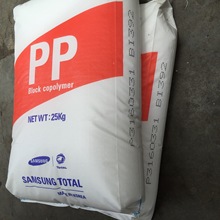Harvard CS50’s Artificial Intelligence with Python – Full University Course - Ep78
(Editor: web3)
 Learn Blockchain, Solidity, and Full Stack Web3 Development with JavaScript – 32-Hour Course - Ep164
Learn Blockchain, Solidity, and Full Stack Web3 Development with JavaScript – 32-Hour Course - Ep164 Solana Developer Bootcamp 2024 - Learn Blockchain and Full Stack Web3 Development - Projects 1-9 - Ep39
Solana Developer Bootcamp 2024 - Learn Blockchain and Full Stack Web3 Development - Projects 1-9 - Ep39 Learn Blockchain, Solidity, and Full Stack Web3 Development with JavaScript – 32-Hour Course - Ep162
Learn Blockchain, Solidity, and Full Stack Web3 Development with JavaScript – 32-Hour Course - Ep162 XRP Ripple LIVE Senate Brad Garlinghouse - FROM WALL STREET TO WEB3 - Martyn Lucas Investor - Ep4
XRP Ripple LIVE Senate Brad Garlinghouse - FROM WALL STREET TO WEB3 - Martyn Lucas Investor - Ep4 Learn Blockchain, Solidity, and Full Stack Web3 Development with JavaScript – 32-Hour Course - Ep21
Learn Blockchain, Solidity, and Full Stack Web3 Development with JavaScript – 32-Hour Course - Ep21
- Solidity, Blockchain, and Smart Contract Course – Beginner to Expert Python Tutorial - Ep3
- Learn Blockchain, Solidity, and Full Stack Web3 Development with JavaScript – 32-Hour Course - Ep250
- Solana Developer Bootcamp 2024 - Learn Blockchain and Full Stack Web3 Development - Projects 1-9 - Ep51
- Learn Blockchain, Solidity, and Full Stack Web3 Development with JavaScript – 32-Hour Course - Ep217
- Solidity, Blockchain, and Smart Contract Course – Beginner to Expert Python Tutorial - Ep70
- Web3 Developer in 2024 Roadmap_ Solidity, Smart Contract, and Blockchain Development [Full Course] - Ep45
- Solana Developer Bootcamp 2024 - Learn Blockchain and Full Stack Web3 Development - Projects 1-9 - Ep79
- XRP Ripple LIVE Senate Brad Garlinghouse - FROM WALL STREET TO WEB3 - Martyn Lucas Investor - Ep4
-
Learn Blockchain, Solidity, and Full Stack Web3 Development with JavaScript – 32-Hour Course - Ep252
 well for test Nets and Main NetsMorales actually comes with a bunch ofhooks like use nft balance tha
...[Details]
well for test Nets and Main NetsMorales actually comes with a bunch ofhooks like use nft balance tha
...[Details]
-
Learn Blockchain, Solidity, and Full Stack Web3 Development with JavaScript – 32-Hour Course - Ep242
 listed response. success tobe true we also want canceled response.successand Botresponse issuccessfu
...[Details]
listed response. success tobe true we also want canceled response.successand Botresponse issuccessfu
...[Details]
-
Learn Blockchain, Solidity, and Full Stack Web3 Development with JavaScript – 32-Hour Course - Ep251
 index to to seeif it's working well so far back in ourindex up at the top we will import nftbox from
...[Details]
index to to seeif it's working well so far back in ourindex up at the top we will import nftbox from
...[Details]
-
Learn Blockchain, Solidity, and Full Stack Web3 Development with JavaScript – 32-Hour Course - Ep100
 in here so that no matterwhat chain we deploy to we don't have tochange any of our code we can alway
...[Details]
in here so that no matterwhat chain we deploy to we don't have tochange any of our code we can alway
...[Details]
-
Web3 Incorporation in Panama (A Legal Guide) - Ep4
 responsible for the GUIfront end layer that entity is going tobe in the terms of use privacy policy
...[Details]
responsible for the GUIfront end layer that entity is going tobe in the terms of use privacy policy
...[Details]
-
![Web3 Developer in 2024 Roadmap_ Solidity, Smart Contract, and Blockchain Development [Full Course] - Ep12](https://cbu01.alicdn.com/img/ibank/2016/257/659/3479956752_1168015140.220x220xz.jpg) your apps andcontracts are also owned by you and youhave no vendor lock-in so if you need toconfigur
...[Details]
your apps andcontracts are also owned by you and youhave no vendor lock-in so if you need toconfigur
...[Details]
-
Learn Blockchain, Solidity, and Full Stack Web3 Development with JavaScript – 32-Hour Course - Ep229
 a Constructorconstruct nope no Constructor so we knowargs is going to be blank and then wecan say co
...[Details]
a Constructorconstruct nope no Constructor so we knowargs is going to be blank and then wecan say co
...[Details]
-
Learn Blockchain, Solidity, and Full Stack Web3 Development with JavaScript – 32-Hour Course - Ep54
 you can learn from thatzoom out a little bit I'll roll my mouseover this I'll grab this I'll copy it
...[Details]
you can learn from thatzoom out a little bit I'll roll my mouseover this I'll grab this I'll copy it
...[Details]
-
Solidity, Blockchain, and Smart Contract Course – Beginner to Expert Python Tutorial - Ep61
 hitcancel for now and we'll also want sometestut Coen ethereum which looks likethis faet has it so w
...[Details]
hitcancel for now and we'll also want sometestut Coen ethereum which looks likethis faet has it so w
...[Details]
-
Learn Blockchain, Solidity, and Full Stack Web3 Development with JavaScript – 32-Hour Course - Ep30
 isgoing to pop up and ask us if we want toactually deploy this this is the exactsame as what we saw
...[Details]
isgoing to pop up and ask us if we want toactually deploy this this is the exactsame as what we saw
...[Details]
Harvard CS50’s Artificial Intelligence with Python – Full University Course - Ep7

XRP Ripple LIVE Senate Brad Garlinghouse - FROM WALL STREET TO WEB3 - Martyn Lucas Investor - Ep18

- XRP Ripple LIVE Senate Brad Garlinghouse - FROM WALL STREET TO WEB3 - Martyn Lucas Investor - Ep5
- Learn Blockchain, Solidity, and Full Stack Web3 Development with JavaScript – 32-Hour Course - Ep29
- Learn Blockchain, Solidity, and Full Stack Web3 Development with JavaScript – 32-Hour Course - Ep27
- Web3 Developer in 2024 Roadmap_ Solidity, Smart Contract, and Blockchain Development [Full Course] - Ep42
- Solidity, Blockchain, and Smart Contract Course – Beginner to Expert Python Tutorial - Ep115
- Learn Blockchain, Solidity, and Full Stack Web3 Development with JavaScript – 32-Hour Course - Ep187
- Web3 Developer in 2024 Roadmap_ Solidity, Smart Contract, and Blockchain Development [Full Course] - Ep48
